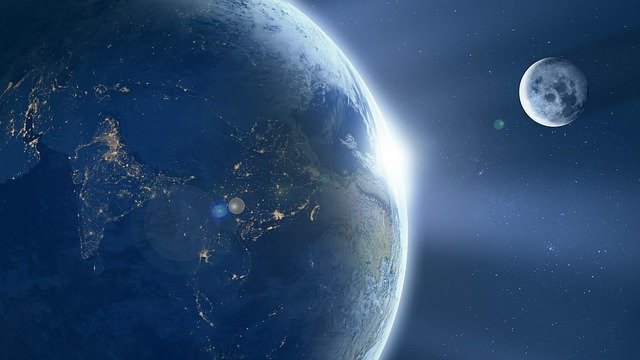Recent studies have shown that the Moon is more than just a piece of cold, lifeless rock. Or at least it wasn’t 4.5 million years ago when it shared a magnetic field with young Earth.
It practically served as a shield then later form the atmosphere that began life.
4.5 billion years ago the Earth was far from being the cradle of life: temperatures were extremely high while the air was toxic. The Sun, which was smaller and colder, spent the worst moments of its childhood, whipping the space around it with rays of radiation and strong solar wind.
In such circumstances, it is a miracle that the Earth has managed to develop the atmosphere and has become a welcoming place for life. This scenario would not have been possible without the presence of the satellite that by linking its magnetic field with Earth, served as a shield against the deadly solar impact, the new study published in the journal Science Advances states.
“The Moon appears to have presented a substantial protective barrier against the solar wind for Earth, which was critical to its ability to maintain its atmosphere during this time,” says Jim Green, NASA’s chief scientist and lead author of the study.
Scientists have presented a simulation of how the planet Earth and its satellite interacted during the early stages of their lives. They looked at the parameters of their magnetic fields and discovered that at some point they had a common magnetosphere.
“The results of our topological magnetic field model demonstrate a critical and previously unrecognized condition: that the coupled Earth-Moon magnetospheres worked together to protect the early atmospheres of both the Earth and the Moon,” says the final research report.
A magnetic exchange involves an atmospheric exchange, scientists say. Extreme ultraviolet light from the Sun would have brought particles from Earth’s upper atmosphere to the Moon along the lines of the lunar magnetic field. This leads to the conclusion that there may have been an Earth-like atmosphere on the Moon in its early stages.
Researchers estimate that the Moon and Earth shared magnetic fields over a period between 4.1 and 3.5 billion years ago. Then, as the moon moved away, at 3.82 centimeters each year, it lost its magnetic field and as a result, its atmosphere.
If the Moon played such an important role in protecting our planet from radiation and solar wind, similarly, there may be other moons around exoplanets in the universe that help preserve the atmospheres for their host planets.
